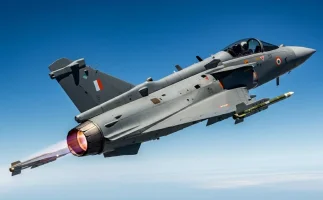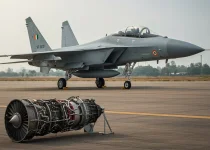- Views: 2K
- Replies: 16

India's recent approval for the procurement of 240 AL-31FP aero-engines for its Su-30 MKI aircraft highlights a pressing need for Hindustan Aeronautics Limited (HAL) to boost the indigenous content in these engines.
While the acquisition, valued at over Rs 26,000 crore, is a step towards maintaining the operational readiness of the Indian Air Force's (IAF) Su-30 MKI fleet, the current level of indigenous content in the AL-31FP engines, at less than 54%, raises concerns about India's dependence on foreign suppliers.
The AL-31FP engine is the powerhouse behind the Su-30 MKI, the IAF's most advanced and numerous fighter aircraft. These engines, upgraded with FADEC technology, play a pivotal role in safeguarding India's airspace and projecting its military power in the region.
However, relying heavily on foreign components for these critical engines leaves India vulnerable to supply chain disruptions, geopolitical uncertainties, and potential restrictions on technology transfer. The ongoing conflict in Ukraine and subsequent sanctions on Russia, the primary supplier of these engines, further underscore the vulnerability of depending on external sources.
Increasing the indigenous content in the AL-31FP engines will not only reduce India's dependence on foreign suppliers but also enhance its self-reliance in critical defence technologies. This will strengthen India's strategic autonomy, allowing it to make independent decisions regarding its defense preparedness without being constrained by external factors.
Furthermore, greater indigenous content will boost India's domestic aerospace industry, creating jobs, fostering technological innovation, and contributing to the country's economic growth. It will also provide valuable opportunities for Indian engineers and scientists to gain expertise in advanced engine technologies, paving the way for future developments in the aerospace sector.
The decision to procure a new batch of AL-31FP engines with upgraded FADEC technology underscores the Indian government's commitment to maintaining the IAF's combat capabilities. However, it is imperative for HAL to seize this opportunity to increase the indigenous content in these engines significantly.



